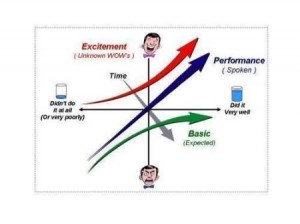Protected: 216 Types of Waste = 216 Potential Innovations
Why Six Sigma Fails Detroit
Michigan desperately needs innovation to be competitive. When Japan started using Statistical Process Control (SPC) now known as Six Sigma, it was a competitive differentiator. In other words Japanese auto makers used quality and lean process as an innovation. Detroit has been feverishly implementing Six Sigma but they are still losing ground to the Japanese and now the Koreans and soon to be China. Why?
Six Sigma is a great thing but doing it as a “me-too”? only creates commoditization. Worse yet, the entire process of Six Sigma is about doing the same thing cheaper and cheaper. That leaves you in a death spiral to the lowest priced product, and little or no profits. Does that sound familiar?
Detroit, Michigan and the USA in general need innovation. Everyone knows that but almost no one is really doing it. The main reason is they don’t know how. What if innovation could be as predictable and systematic as Six Sigma? What if a company could create practical, profitable innovations on demand? Does that sound fantastic? Impossible?!? It is fantastic and it’s absolutely possible.
Predictive Innovation makes innovation:
- Efficient
- Low-Risk
- Controllable
- Repeatable
- Competitive
- Reliable
- Just-In-Time
Rather than looking at innovation as a magical creative activity it uses the very well defined study of System Theory and new breakthroughs in Information Theory to create a step-by-step process for innovation. How systematic is it? How about knowing there are 7 specific elements to innovate in any product or service and there are 15 types of alternatives for each element? When you realize that, you are guaranteed 105 innovations targeted precisely to your business needs and your customer’s desires.
When you use Predictive Innovation you can create an innovation strategy that causes your profit margins to increase overtime, risks to decrease and eliminate the threat of any competition.
Predictive Innovation has been used to create entire families of products, increase the value of investments, and solve seemingly impossible problems. It’s been applied to manufacturing, software, medicine, marketing, security, business strategy, politics, and entertainment.
3D Print a House
There are so many elements to this article that I need to break it up into a series.
Just last month on the Interactive Technology radio program I mentioned 3D printers that can manufacture things on demand. I also pointed out that China needs houses and the Detroit auto industry needs new markets and suggested Detroit pre-fabricate houses for China.
Now I find an instance of the 3D printer designed to make buildings.
And I find someone making a 3D printer to make more 3D printers.
And you can make your own 3D printer for $2400. And this is their project Wiki for the open source 3D printer.
I am very excited by the development of 3D printer technology. This makes new innovation easier and quicker. The open source 3D printer makes this technology available to more people and empowers them to be innovators. More people with access to this technology mean more perspectives on innovation leading to more, better and faster innovation.
And this new technology that is moving 3D printers past prototyping and into manufacturing changes work from physical labor to mental. Design is now the only work needed.
“Khoshnevis believes his contour crafter will revolutionize building construction, dragging it into the digital age. Today, despite the advent of tech tools like power saws, mechanized cranes, and pneumatic nailers, construction is essentially the same tiring, gritty job it has been for 20,000 years. Workers still have to cut, grasp, hoist, place, and fasten materials, which is why labor accounts for about half of a building’s cost. The process is dangerous, slow, and wasteful: More than 400,000 American construction workers are injured each year, and a typical American house takes at least six months to complete, generating about four tons of waste.”
Everything he says is absolutely true. Unfortunately the entire structure of the industrialized economy depends on people working to get paid. If people don’t need to work then they won’t get paid. That is very bad. This doesn’t mean this type of technology won’t catch on and it doesn’t mean it shouldn’t catch on. It does mean huge disruption. Disruptions of this type typically are resisted with violence and that harms everyone. I hope to spread the ideas that I discovered to make these innovations a win-win-win.




 Predictive Innovation Training
Predictive Innovation Training Predictive Innovation: Core Skills Book
Predictive Innovation: Core Skills Book RoundSquareTriangle.com
RoundSquareTriangle.com